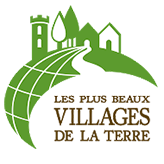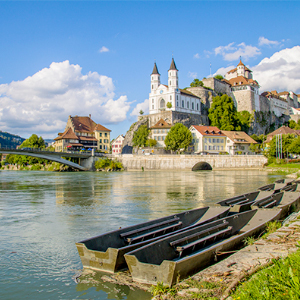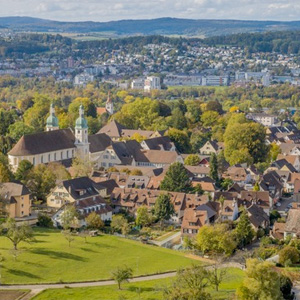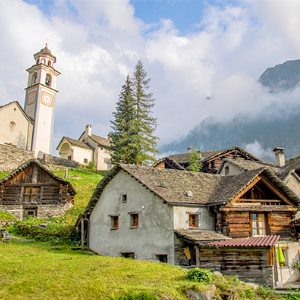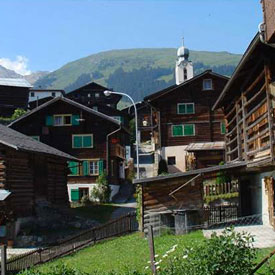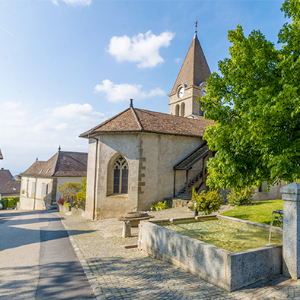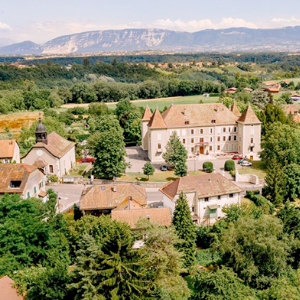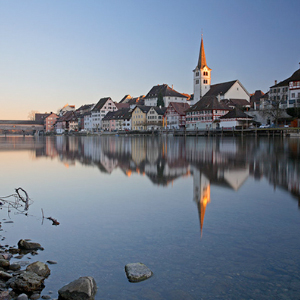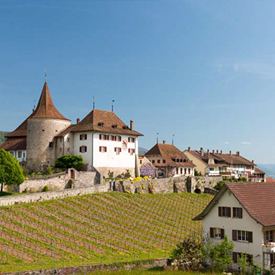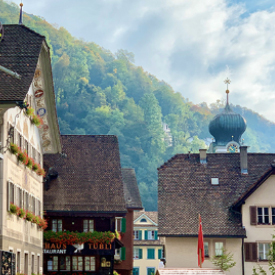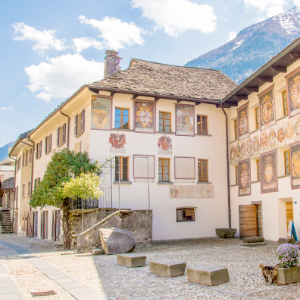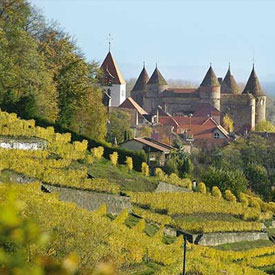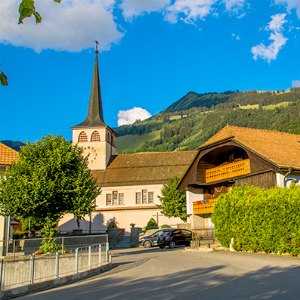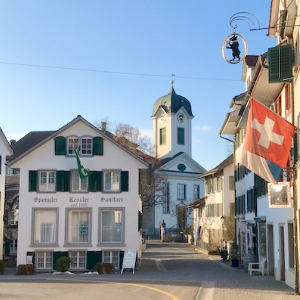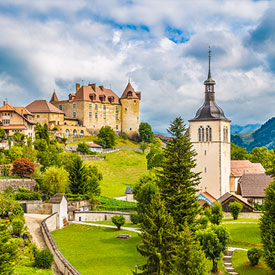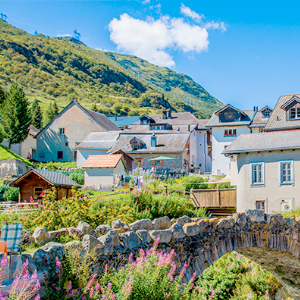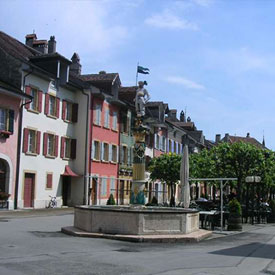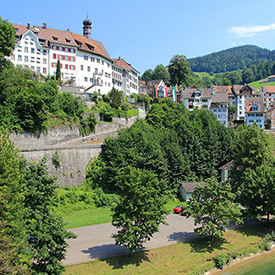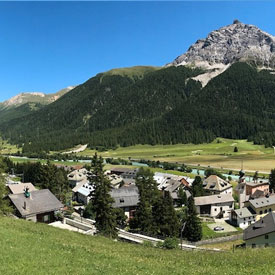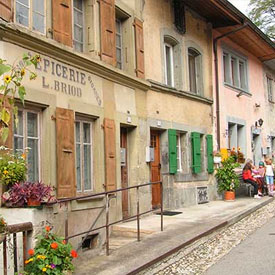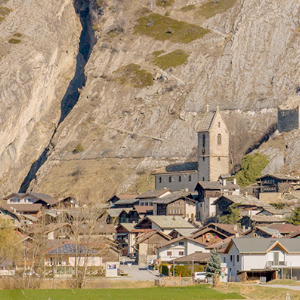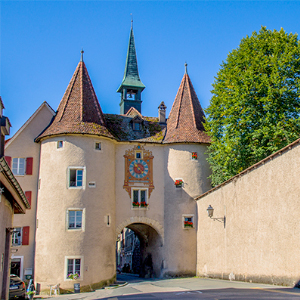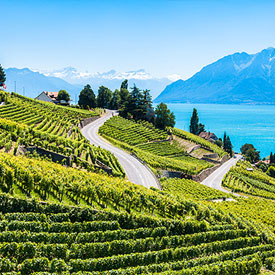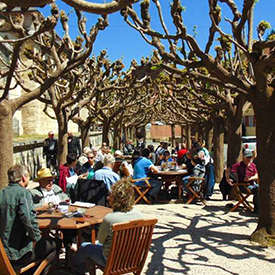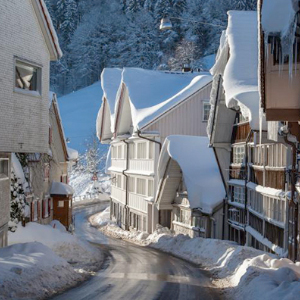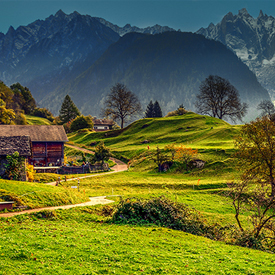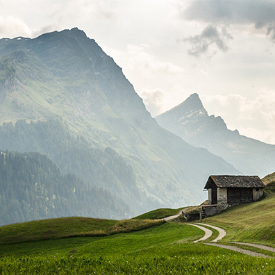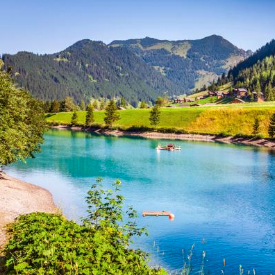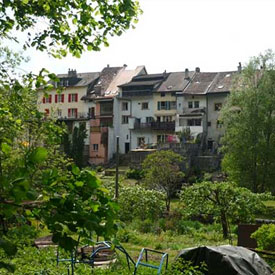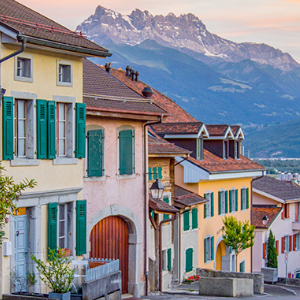“The most beautiful Villages in Switzerland” is an independent association founded in 2015 with the aim of preserving, promoting and coordinating in a tourist network the municipalities that, meeting the criteria set out in the quality charter are classified as such.
Since 2017, the association is part of the international federation of the “Most beautiful Villages of the World” and since 2019 also represents a village in the Principality of Liechtenstein.
As a certificate of quality, the classification (listed village) guarantees the public the beauty embodied by its registered trade mark. Its aim is to incite permanent action towards making each village a place of exception where harmony between site, architecture, heritage and landscape is source of emotion and enjoyment, whether one lives there or visits.
Visit The most beautiful Villages in Switzerland website at www.beauxvillages.ch to find out more.
Road map, tourist guide, album…whether for practical or leisure purposes, the publications under the “Most beautiful Villages in Switzerland” brand are tools to help you prepare an escapade as much as they are an invitation to the simple pleasure of discovery.
THE VILLAGES
Albinen, a beautiful village on the southern slope at the entrance to the Dalatal. The road connects it to Leukerbad, rich in thermal springs, and the village of Leuk. Among the places of interest in Albinen are numerous preserved mountain farms and barns in the Valais. The village church, however, is built in a modern style after the old church was destroyed by an earthquake.
Avenches is a medieval city, formerly Aventicum, the capital of Roman Helvetia. This little village boasts a unique heritage from Roman times. It is considered a jewel of La Broye on the shores of Lake Morat, and it is set in the canton of Vaud, near its border with Fribourg. The gentle rolling hills between the Lakes Morat and Neuchâtel, the vineyards and the nature reserves are ideal for walking and cycling.
The connection to the Walser culture and tradition is evident not only in the spoken language, but also in the traditional architecture made of peat, old stables, Gadumtschi and traditional houses. Even the place names reveal the history of these alpine settlers, with names such as Grossalp, Zum Schwarza Brunna, Bann, Martschenspitz and Ritzberg to name but a few.
Bremgarten is a municipality in the Swiss canton of Aargau. Its medieval old town is listed as a heritage site of national significance. Bremgarten has a diverse cultural offer, combined with many sights from historical and urban development. The cultural activities are partly based on private initiative, but mostly on the institutional level (association activity).
At the western end of the village, a stone’s throw from the French border, the commune has a rich stately past and a historical heritage shaped by a succession of notables and artists who have frequented the place (Armand Leleux, Camille Corot, Wolfgang Mozart, Charles Bovy-Lysberg, to name but a few). In 1978, Dardagny received the Wakker Prize (Heimatschutz) for protecting the village in an exemplary manner.
The small Rhine town of Diessenhofen, situated away from the big tourist streams, invites visitors to discover quiet corners and places. The little town shows itself in its original medieval structure, which is still preserved today. The main street runs under the archway of the seal tower.
Ernen is a municipality in the district of Goms in the canton of Valais in Switzerland. In 1979, the village was awarded the Wakker Prize for the preservation of its architectural heritage. Ernen offers many sports and entertainment options throughout the year. For instance, the Festival Musikdorf Ernen.
Evolène village and the whole region is a dream destination for mountain lovers. Its landscape, traditions, nature and preserved heritage makes this destination in a charming place to relax. It is located in the district of Hérens in the canton of Valais in Switzerland, and it is popular not just for nature lovers and winter sports seekers, but also as a popular resort for writers and artists due to its tranquil settings.
Gersau was the smallest republic in the world, but today it is an idyllic tourist destination on Lake Lucerne. Thanks to its mild climate, it is lovingly called the “Riviera of Central Switzerland”. From here you can take a day trip to the lake or Mount Rigi. But Gersau also has many beautiful places to visit. This lake village also hosts the famous StradivariFEST music festival every year.
What characterises Giornico above all is the continuous intertwining of the natural element with the work of man: in fact, the inventory of environmental and cultural assets is extraordinarily rich to the point that the entire village constitutes a veritable museum. Giornico is a village unlike any other precisely because it possesses a greater amount of beauty.
Grandson is a municipality in the district of Jura-Nord Vaudois in the canton of Vaud in Switzerland. It is home to one or more prehistoric pile-dwelling (or stilt house) settlements that are part of the Prehistoric Pile dwellings around the Alps UNESCO World Heritage Site. The entire town of Grandson is part of the Inventory of Swiss Heritage Sites.
The village owes its pastoral activity and the marketing of its cheeses to an era of prosperity in the 17th and 18th centuries. Proof of this ease can be seen in its rich houses, its stone facades, its tripartite windows with gothic recognitions. At the edge of the forest, the house of Pierre de la Tinaz, cheese and banneret trader, breathes this wealth.
The village centre of Hospental is well worth a visit, as the houses still date from the prosperous times and create a harmonious village image. The fortified tower, which dates back to the 13th century, is also characteristic of the landscape. Zumdorf also belongs to the municipality of Hospental. It is not only the smallest village in the Andermatt holiday region, but in the whole of Switzerland. Only four people live in Zumdorf all year round. Hospental itself has 190 inhabitants.
Le Landeron is a municipality in the Swiss canton of Neuchâtel. Landeron is a long, fortified market town, built between 1325 and 1344 by Rudolf IV of Neuchâtel. Main street is lined with houses and closed at the ends by a gate. The entire town of Le Landeron is part of the Inventory of Swiss Heritage Sites.
Not to be missed: The lake walk characterized by boat mooring, the characteristic alleys that thin out inside the village, the Catholic parish church of Santa Maria, Palazzo Paleari, an elegant noble residence built in 1483. In the facade stuccoes by Abbondio Paleari, The chapel of St. Anthony of Padua, The chapel of Sant’Antonio Abate, located at the foot of the church, an unusual building of medieval origin.
In the geographical center of French-speaking Switzerland, ideally located at the junction of the Lake Geneva and Plateau, the city of Moudon has flourished in a green setting for nearly 2000 years. A tourist center of cantonal importance, the former capital of the Pays de Vaud can boast a wealth of built heritage.
In Niedergesteln you will find the remains of a castle, the beautifully maintained old farming village with Wefahaus and clock museum, as well as the accessible Eiszeit cave through the castle hill. Another highlight is the suspension bridge that stretches across the Jolischlucht gorge. It is a fantastic demonstration of how nature and modernity enrich each other.
It seems certain that the capital of the Ajoie enjoyed a relative importance already in the eleventh century favored by its position; at that time there is evidence of the existence of two churches. It later became the property of the Counts of Ferrette, then the Lords of Montbéliard, and in 1271 Porrentruy passed to the Bishop of Basel.
Poschiavo is a municipality in the Bernina Region in the canton of Grisons in Switzerland. Poschiavo (in dialect, Pusc’ciâf ) is a pearl of Italian Graubünden, with a history and culture to be envied by many. Renowned for its local cuisine, its elegant square and the unspoilt nature of the Bernina red train, a UNESCO World Heritage Site.
Romainmôtier is a mediaeval town, considered a jewel of the Yverdon-les-Bains region. Its Cluniac abbey church, built by Cluny monks in the 10th century, is a must for culture and nature lovers. A place to meditate and regenerate, Romainmôtier offers a special sense of intimacy in this exceptional setting created with artistry and sensitivity.
Located at almost 1,000 meters above sea level, Rougemont (Red Mountain) seduces with the beauty of its architectural heritage. The village is home to several wooden 400 years old chalets, witnesses of the popular art of the region. Rougemont also has an exceptional historical heritage. Founded by monks from Cluny in 1080, the site includes an 11th century Romanesque church and a 16th century castle, both important cultural monuments.
Saillon is a municipality in the district of Martigny in the canton of Valais in Switzerland. Its fortifications and Bayard tower are listed as Swiss heritage site of national significance. The entire town of Saillon is part of the Inventory of Swiss Heritage Sites. Its museum of the fake currency (Musée de la Fausse Monnaie) shows the whole history of the –real and false– currency in Switzerland.
Saint-Saphorin is a small, wine-growing and sun-drenched village clinging to the steep Lavaux hillsides, between the vineyards and the lake and opposite the grandiose Alpine peaks. This little village is famous for its narrow alleyways and the unusual church tower, and can be traced back to Roman times. Saint-Saphorin is part of the terraced Lavaux vineyards, which are part of the UNESCO World Heritage. It lends its name to a wine of great finesse made from Chasselas grapes.
Saint-Ursanne is an old town and a former municipality of the district of Porrentruy in the canton of Jura, Switzerland which has preserved much of its medieval character. This picturesque village links its origins to the agglomeration that developed around the hermitage of the Irish monk Ursicinus.
The Simplon village is located at 1476 m a.s.l. on the south side of the Simplon Pass and has 310 inhabitants. The architectural style with its typical stone slab roofs is reminiscent of nearby Italy. The village centre is classified as a site of national importance in the inventory of sites worthy of protection in Switzerland.
Soglio is a village and a former municipality in the district of Maloja in the Swiss canton of the Grisons close to the border with Italy. It is now part of the municipality of Bregaglia. Do not miss the evangelical church, the Palazzo Salis, the Gubert house, the Baptist house, Lo Stallazzo or The Max house.
Valangin is a village in the canton of Neuchâtel in Switzerland. Valangin Castle and the Collégiale (Collegiate church) are listed as Swiss heritage site of national significance. The small city of Valangin is part of the Inventory of Swiss Heritage Sites. It is a village full of history, and it was place of passage for travelers.
Yvorne already existed in Gallo-Roman times under the name of Evurnum, on a site west of the present village. At that time, it was probably a river port. In a document from 1020, Yvorne is mentioned under the name ‘Evurnum in pago capitis laci’, then “Yvorna” at the time of the Counts of Savoy.
